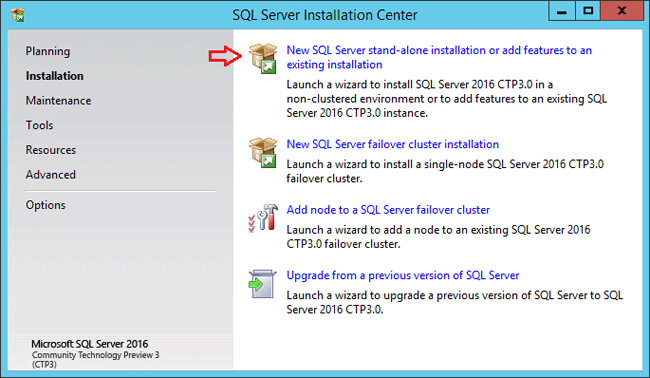Install Sql Server 2008 On A Windows Server 2008 Cluster
Apr 21, 2016. I recently had to install a SQL Server 2008 R2 failover cluster on Windows Server 2012 R2. Some of you may be wondering if this is actually supported. A quick look at the hardware and software requirements for SQL Server 2008 R2 indicates that it is indeed supported. With that, here are three things you. To run the Validate Cluster Configuration Wizard: Open the Failover Cluster Management console. Under the Management section, click the Validate a Configuration link. In the Select Servers or a Cluster dialog box, enter the hostnames of the nodes that you want to add as members of your cluster and click Next.
This page applies to: • Clusters running on Windows Server 2008 only. If your cluster is running on Windows server 2003, refer to instead. • SQL Backup versions 5, 6 and 7 You can install SQL Backup on a Microsoft Cluster Service without using the clustering functionality of the SQL Backup installer.
For example, you may want to do this if you have already experienced problems using the installer on a cluster. This page describes: • • • • Licensing You must have a SQL Backup Pro license for each server on which you want to install the SQL Backup server components.
This means that each node (physical computer) must have its own license. For example, a two node active-active cluster must have two licenses, and a two node active-passive cluster must also have two licenses. Cleaning up an existing installation If you have already attempted to install SQL Backup on the cluster but the installation did not complete successfully, you must 'clean up' the SQL Server instances. To do this, perform the following steps on each of the SQL Server instances on which the installation failed: • Uninstall the server components using the Add or Remove Programs dialog box. You will be asked whether you want to remove the SQL Backup file containing the history of the backup and restore activity. If you want to save or archive the data store, ensure you click No on this dialog box.

• Open the Registry Editor (regedit.exe) and navigate to the SQL Backup branch in the registry editor: For all versions of SQL Backup on 32-bit servers, and for SQL Backup 6.4 and later on 64-bit servers, the branch is in HKEY_LOCAL_MACHINE SOFTWARE Red Gate For SQL Backup 6.3 and earlier on 64-bit servers, the branch is in HKEY_LOCAL_MACHINE SOFTWARE Wow6432Node Red Gate • In the next step you will delete the contents of the SQL Backup branch, so if you want to copy your settings back later you should export the branch; select the SQL Backup branch and on the File menu, click Export. • Delete the following subkeys from the SQL Backup branch: BackupSettings BackupSettingsGlobal InstalledInstances When you have performed these steps on the SQL Server instances as required, you can start the manual installation.
Installing manually. Although they are similar, this manual installation process (for SQL Backup versions 5, 6 and 7) has critical differences from version 4.
If you do not observe these differences, the installation will not be fully cluster-aware. To install the SQL Backup server components, perform the following steps on each SQL Server instance in the cluster. • To start the SQL Backup (server components) Setup Wizard, run SQBServerSetup.exe on the cluster node. • On step 2 of the wizard, the clustered SQL Server instances will be shown in the list of available instances in the wizard.
Select a clustered instance and click Next. • On step 3, ensure you clear the option to Install SQL Backup on all cluster nodes. Panzer General 3d Deutsch Download more. • On step 4, specify a domain account with sufficient privileges to run as a service, including the Log on as a service permission, for the SQL Backup Agent service to run as.
• On step 5, choose the authentication mode for the SQL Backup Agent service to connect to the SQL Server cluster. The account must be a member of the sysadmin fixed server role. • On step 6, specify a location for the SQL Backup data store which is a shared drive, accessible by all nodes in the cluster. The location must be specified as a local path (for example, E: SQLBackupData (local) ), and not as a UNC path (for example, server share (local) ). • On step 7, the location for the SQL Backup server component files must be a local drive. For more information about using SQBServerSetup.exe see. • Use the Services application to stop the SQL Backup Agent service if it is running.